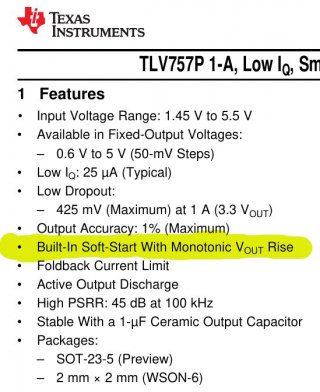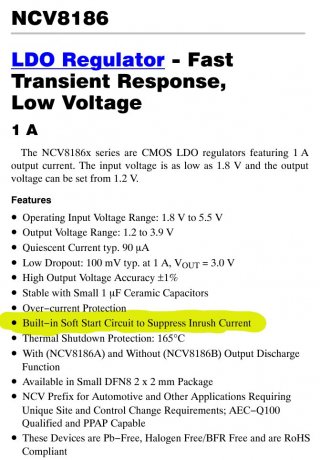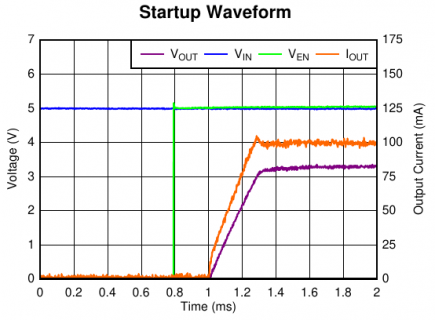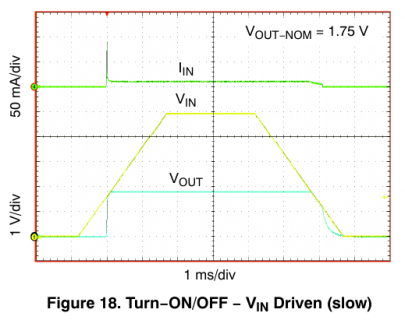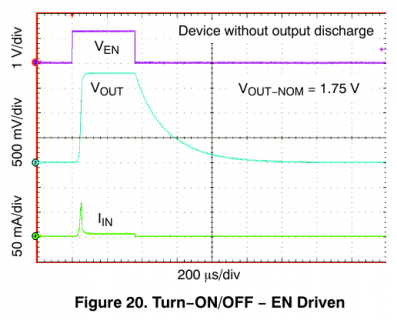We have a board using the MAX17501B switching supply which had been working great with the Teensy 4.1. Recently built another board and installed a new 4.1 manufactured after March 2022 with the new NCV8186AMN330TAG LDO on it. The new LDO seems to trip the MAX17501B's overcurrent detection and ends up hiccupping and never fully turning on. The 4.1 is the only thing being supplied power by this regulator and it works perfectly with the older TLV75733P equipped 4.1s. I have tried slowing down the startup on the MAX17501B regulator and adding 100uF+ of capacitance and haven't had any lucky so far. But it seems like the NCV8186AMN330TAG LDO has a MUCH faster turn on time than the old TLV75733P, ~25uS vs ~1.3ms per their data sheets. Any suggestions? More capacitance?
Per this note on the teensy 4.1 page:
"Teensy 4.1 manufactured after March 2022 has TLV75733P (U4) replaced by NCV8186AMN330TAG"
here is a trace with the slower soft start 1.5ms ish on the MAX17501B
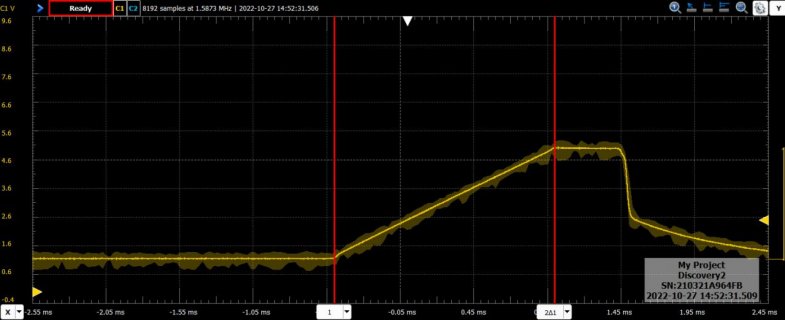
Per this note on the teensy 4.1 page:
"Teensy 4.1 manufactured after March 2022 has TLV75733P (U4) replaced by NCV8186AMN330TAG"
here is a trace with the slower soft start 1.5ms ish on the MAX17501B



